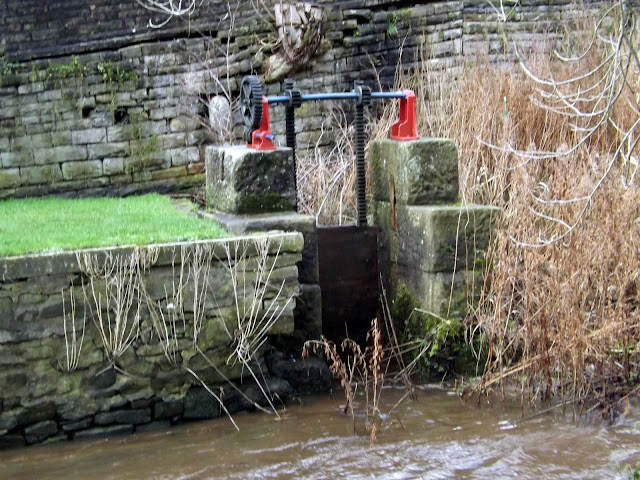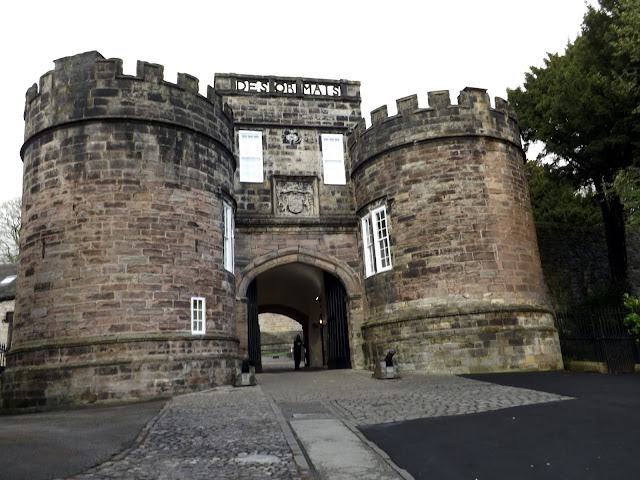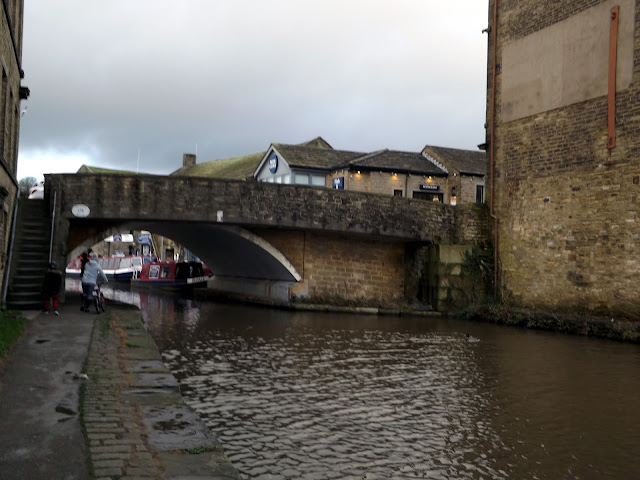So on Sunday the 12th January 2020 after a walk in Malham, Dan and I drove down to Skipton to spend the night there.
We parked up in Coach Street car park, where we'd sleep in the back of my Focus Estate. All in all it cost £5.70 to park from 2pm till the next morning, bargain.
Skipton (also known as Skipton-in-Craven) is a market town and civil parish in the Craven district of North Yorkshire.
We walked over to the Liverpool and Leeds Canal that runs through the heart of Skipton.
The Leeds and Liverpool Canal is a canal in Northern England, linking the cities of Leeds and Liverpool. Over a distance of 127 miles (204 km), it crosses the Pennines, and includes 91 locks on the main line. It has several small branches, and in the early 21st century a new link was constructed into the Liverpool docks system.
The name Skipton means 'sheep-town', a northern dialect form of Shipton. The name is recorded in the Domesday Book of 1086. It was important during the English Civil War and was the site of a prisoner of war camp during the First World War.
Frederick Sewards Trueman, OBE (6 February 1931 – 1 July 2006) was an English cricketer, mainly active from 1948 to 1968, who played for Yorkshire County Cricket Club and the England cricket team. He had professional status and later became a popular author and broadcaster. He was born in Stainton, West Riding of Yorkshire, and died in Steeton with Eastburn, West Yorkshire. He appeared in 603 first-class matches, including 67 Test matches, as a right-handed batsman who bowled right arm fast.
In 18 March 2010, a bronze statue of Trueman by Yorkshire-born sculptor Graham Ibbeson was unveiled by Veronica Trueman at the Leeds and Liverpool Canal basin in Skipton. Also in attendance were Trueman's brother Dennis and the former Test umpire Dickie Bird.
We walk on along the canal.
A commencement ceremony was held at Halsall, north of Liverpool on 5 November 1770, with the first sod being dug by the Hon. Charles Mordaunt of Halsall Hall. The first section of the canal opened from Bingley to Skipton in 1773. By 1774 the canal had been completed from Skipton to Shipley, including significant engineering features such as the Bingley Five Rise Locks, Bingley Three Rise Locks and the seven-arch aqueduct over the River Aire, at Dowley Gap. Also completed was the branch to Bradford. On the western side, the section from Liverpool to Newburgh was dug. By the following year the Yorkshire end had been extended to Gargrave, and by 1777 the canal had joined the Aire and Calder Navigation in Leeds. From Liverpool it had reached Wigan by 1781, replacing the earlier and unsatisfactory Douglas Navigation. By now, the subscribed funds and further borrowing had all been spent, and work stopped in 1781 with the completion of the Rufford Branch from Burscough to the River Douglas at Tarleton. The war in the American colonies and its aftermath made it impossible to continue for more than a decade.
We walk behind the rear of The Black Horse PH and past The Holy Trinity Church.
One of the oldest mills in North Yorkshire, High Corn Mill is powered by the waters of Eller Beck, and dates to 1310 when it was owned by Robert de Clifford, 1st Baron de Clifford; at that point it was transferred to the powerful Clifford family by the then King Edward II. The mill as it appears today is only half of what used to exist when two mills were in operation to produce corn for the whole of Skipton. The mill has been completely redesigned, from the mill grounds to the buildings themselves. The outside walls of the mill have been sandblasted and the two main buildings of the old mill have been turned into flats from 2007 onwards, with one stand-alone building yet to be redesigned, touched or Sandblasted.
We pass the Skipton Castle, thought we'd be able to gain access further up but we were wrong!
Skipton became a prosperous market town, trading sheep and woollen goods: its name derives from the Old English sceap (sheep) and tun (town or village). A market stemming from its formative years still survives. In the 19th century, Skipton emerged as a small mill town connected to the major cities by the Leeds and Liverpool Canal and its branch Thanet Canal, (known locally as 'Springs branch canal'), but during the 20th century Skipton's economy shifted to tourism, aided by its historic architecture and proximity to the Yorkshire Dales. Since 1974, Skipton has been the seat of Craven District Council. The Skipton Building Society was founded in the town. In 2016 Skipton was voted the best place to live in England for the second time, having been voted for by the Sunday Times, two years earlier.
We walked as far as the Skipton Woods, where we turned around and headed back into town.
Passing the Castle Inn, a traditional coaching Inn situated in the oldest part of Skipton, nestling under the shadow of the medieval Skipton Castle.
We took a quick stop off and look at The Holy Trinity Church.
The first church on the site was built in the early 12th century, probably in wood. The present church dates from about 1300, and was extended to the east in the late 15th century. The church was damaged during the Civil War, and was repaired and restored in the 1650s with financial assistance from Lady Anne Clifford of Skipton Castle, whose father's tomb is in the church. In 1853 the tower was struck by lightning. The church was restored in 1909 by the Lancaster architects Austin and Paley. During this process, the galleries were removed, a north transept and new vestries were added, and new seating was installed. The church was struck by lightning again in 1925, causing a fire that destroyed the organ and damaged the roof. The roof was repaired, and a new organ case was installed, again by Austin and Paley. In 1979 the Lady Chapel was created in the southeast corner of the church, and more recently a Prayer Corner was developed in a corresponding position at the northeast of the church.
Outside again we walk up to Skipton Castle, but don't enter as we didn't fancy paying the admission fee of £8.70 each.
Over 900 years old, Skipton Castle is one of the most complete and best preserved medieval castles in England.
The castle was originally a motte and bailey castle built in 1090 by Robert de Romille, lord of the multiple estates of Bolton Abbey. Shortly after 1102 Henry I extended Romille's lands to include all of upper Wharfedale and upper Airedale. The earth and wood castle was rebuilt in stone to withstand attacks by the Scots. The cliffs behind the castle, dropping down to Eller Beck, made the castle a perfect defensive structure. The Romille line died out, and in 1310 Edward II granted the castle to Robert Clifford who was appointed Lord Clifford of Skipton and Guardian of Craven. Robert Clifford ordered many improvements to the fortifications, but died in the Battle of Bannockburn in 1314 when the improvements were barely complete.
During the English Civil War the castle was the only Royalist stronghold in the north of England until December 1645. After a three-year siege, a surrender was negotiated in 1645 between Oliver Cromwell and the Royalists. Cromwell ordered the removal of the castle roofs. Legend has it that during the siege, sheep fleeces were hung over the walls to deaden the impact from the rounds of cannon fire. Sheep fleeces feature in the town's coat of arms. Skipton remained the Cliffords' principal seat until 1676. Lady Anne Clifford (1590–1676) was the last Clifford to own it. After the siege, she ordered repairs and she planted a yew tree in the central courtyard to commemorate its repair after the war.
Today Skipton Castle is a well-preserved medieval castle and is a tourist attraction and private residence. The castle is the start of the 100-mile (160 km) Lady Anne's Way long distance path to Penrith.
Now we head down the High Street and pass The Black Horse listed bar to the front of the building dating from 1676.
 |
| See all, 'ear all, say nowt, eat all, sup all, pay nowt, An if th'wer does owt for nowt allus do it for thissen. Ee by gum. |
You can see the Horse mounting steps outside the front of the pub.
After walking about the shops, we take the canal towpath back into town centre.
We pass the Early door micropub, but first its dinner and a pint in The Devonshire PH a Wetherspoons.
Then we head back to The Early Doors micropub, where I had a pint of New Zealand Pale. It was okay but not an amazing pint.
Then we head back to the car to pay for the overnight stay and then head back over the canal to The Beer Engine Micropub.
This was a fantastic pub, stank of damp but what a great atmosphere in there. Its run by James originally from The Shetland Isles. He made us very welcome chatting to us as we the locals.
They were amazed we'd driven all the way up from London just to walk in Malham!
I had a couple of pints a Oakham Waimea (Very nice) and a VOG Chaos also very nice.
After a few drinks we head back to the car knackered as we'd been up from 4am had a walk and long drive, so needed some sleep.
However I got a couple of hours kip then bothered by a Ford Focus circling around the car park, slowly driving past us flashing lights and indicating and stopping opening and closing doors. This went on for about almost an hour. I can only assume it is a dogging area. I thought at first it may have been security.
Anyway I thought I've had enough of this, got out and walked past the car, a woman driver smiled at me and I instinctively smiled back. Then thought oh God hope Ive not given her the go ahead! She with a man in the car. So I head back and they continued to drive around until midnight where after I did get a good nights kip.
Then the next morning after breakfast in the Wetherspoons we drive over to Holmfirth.


































